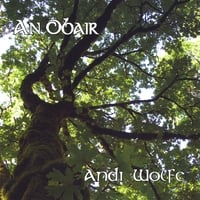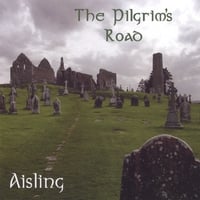 "Morning! Tea? Coffee?" This was our daily wake-up ritual, although Steve and I were usually awake before the wake-up call. Chirri (on the right) and Mingmar (left) came to our tent each morning at 6 am to bring us hot tea.
"Morning! Tea? Coffee?" This was our daily wake-up ritual, although Steve and I were usually awake before the wake-up call. Chirri (on the right) and Mingmar (left) came to our tent each morning at 6 am to bring us hot tea."Yes, please - two teas, two sugars, Thank you!"
"You're welcome!" - the latter was always said with a chuckle. Sherpas don't have an equivalent phrase in their language.

Ah, yes - the conveniences of trekking. Sometimes you had access to an indoor porcelain squat hole, but most of the time the facilities were either a toilet tent with a trench dug for the temporary stay, or something along this caliber.

An outhouse with a squat hole. There was always some form of plant material to kick into the hole for composting. The windows in the back provided some much needed ventilation. One trekking rule I discovered was, "don't blow your nose in the outhouse." Trust me on this one.

For the record.

Gathering before the trek begins. There was always someone that needed to use the facilities before hitting the trail.

This is Tendi, our lead trail Sherpa, in his pink "Smurfette" hat. We all got such a kick out of this hat. I'm sure a trekker left it for him from a previous excursion.

The day was very overcast and so the mountain views were not with us this day. I just reread my journal entry for this section of trail and I must have still been very ill. The entry talks about exhaustion and wishing that I could clear my lungs and nose. I had to give up my pack again, so that's a sure sign that I wasn't feeling well at all.

The scenery from here was missed on the way to Dingboche, also. We were in snow that day and so the views were new to me. I hadn't remembered seeing the alluvial fans coming down off the slopes - another clear sign that the Himalayas are eroding away as they are going upwards.

The trail wasn't too bad in most sections - rocky, but following the river for the most part.

From Dingboche on towards lower elevations, there are signs of permanent settlements all through the region. The stone walls are well maintained and you can see signs of agriculture.

The streams are full of glacial milk - the microscopically ground sediments that come off the glaciers that feed them.

Time for a workshop session - this one on videography, I think.

Chris Marquardt looks like a pirate saying, "Arrrrgh."

Jon Miller

Pasang Sherpa - he always had a beautiful smile.

Sonam Sherpa - he served as our guide for the trek and in Kathmandu.

More workshop tips being shared.

Here's a look back up the alley.

The ubiquitous porter, carrying a load that is beyond belief.

Most of the porters carry a T-shaped stick that is used to take the load off their shoulders during their rest breaks.

Burlesque music, please! Jon got a bit warm and decided to take off a layer.

As we returned to lower elevation, more and more settlements appear. Every flat surface along the valleys are used.

The "pure" yaks will soon be left behind as we go to lower elevations. They are adapted to the alpine zone. Below 13,000 feet one usually sees the yak-cow hybrids.

Another tea house under construction. This is a sure sign that tourism drives the economy of this region.

All of the construction is done by hand, including the shaping of stones.

We saw more yaks than ponies, but there are a number of ponies in the villages and you occasionally see one on the trail.

I always enjoyed passing through one of these gates. There are prayer wheels lining the walls inside.

Tengboche, perched atop the ridge.

Lovely, lovely irises. I love them all. I should have been an iris systematist.

I didn't notice the suspension bridge that was strung beneath this bridge on our way up the trail. I think that was because we didn't have a clear view of it from the other side. I much prefer the thought of crossing the sturdy bridge rather than the rickety suspension bridge.

A mountain pony - love that curly hair!

One of my favorite pics of Chris Marquardt. He always had a serious (pissed?) face on when I snapped his photos. He told me this was a look of determination.

The Stupa at Tengboche. We stopped in Tengboche for lunch. I wasn't feeling well and ended up going inside a tea house to warm up while the rest of the group had lunch outdoors. As I recall, it was windy and chilly. I was cold and needed to warm up.

Below Tengboche, we descended into the Rhododendron forest. The smell of the trail was earthy through this biome.

The rhododendrons were in peak flowering near the top side of their elevational range. As we descended, they were well on the way to producing seed and the flowers were past prime.

The decidious trees were leafing out. This valley will have a very different look in midsummer than it had in late spring.

Kancha Sherpa. He had a terrible toothache on this day. He had the tooth pulled the next day as we passed through Namche Bazaar.
Kancha carried my pack during the climb up to Tengboche. He's Pasangs older brother and I really enjoyed getting to know both of them on the trail.

Steve - he was feeling pretty good this day as I recall.

The rhododendron forest yields to a pine dominated one as we progress down the mountains.

One of the legumes in bloom. If anyone has a clue as to the identity, please post a comment.

Let's see, we've done suspension bridges, steel frame bridges, flimsy wooden plank bridges, and sturdier wooden bridges.

A species of dogwood.

Wild strawberry.

Something in the Asteraceae. Pussy toes comes to mind? Any guesses as to ID?

A species of wild rose.

Another legume species - anyone know this plant?

This one is a puzzle - I could use some help identifying it.

Iris - they're so beautiful!

I think this is a cotoneaster.

Euphorbiaceae.

Tea time!

Nap time! Jon Miller and John Coleman are studying the insides of their eyelids.











No comments:
Post a Comment